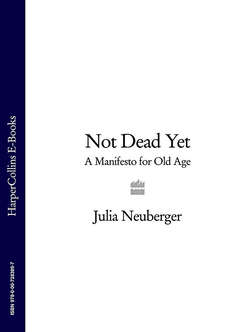Читать книгу Not Dead Yet: A Manifesto for Old Age - Julia Neuberger - Страница 24
Where we go wrong
ОглавлениеSo good health, and promoting independence, are key to any definition of being healthy for an older person him or herself. This sense of being in control, having the care we need and not being subject to other people’s ideas of what would be just right for us, is critical for a sense of autonomy and well-being. You might have thought this fitted quite well with the ethos of the times, given all the mantras we hear about a patient-led NHS. Yet neither doctors nor patients are quite sure.
The patient-led NHS, with its huge emphasis on patient choice – which has to be a good thing in most circumstances – seems to have forgotten about continuity of care, about a personal relationship with the GP, about the small things that matter more than being able to choose where to have some particular procedure in middle age. Older people may need any number of procedures. What they don’t usually need – or indeed want – is to have an isolated procedure done somewhere they have apparently ‘chosen’, apparently only on the basis of convenience or speed of access, but a long way from the care they get the rest of the time for their growing number of chronic conditions.
Diana Jelley, a GP in North Shields, puts this very well. There was a patient she had been looking after for some fourteen years, popping in to see her when she needed, a retired nurse who had had a heart attack aged 76 and whose condition gradually worsened over the years.20 She was short of breath. She had heart failure. She had diabetes. She had high blood pressure. She had high cholesterol; her liver function was poor; and every intervention designed to improve one area of her disorders eventually ended up making another one worse.
‘She is not the kind of patient who had the opportunity to fill in the “Your health, your care, your say” survey to inform the recent white paper on community care,’ says Dr Jelley. ‘But if she had been asked, I feel sure that continuity of care from a practice where everyone knew her was infinitely more important than the “instant access for routine care at any time” that seems to drive the White Paper’.
But then she was not middle aged, middle class and living in middle England. She rated the quality of her personal care very highly – from the reception team to the visiting nurses and general practitioners. I don’t think her view would have changed even if she had known that her care fell short in many areas of the Quality and Outcomes Framework indicators for which GPs receive payments as part of their contract. A few weeks ago she suffered another heart attack followed by a stroke, and never returned home. She died peacefully this week in a local ‘continuing care’ bed, at the age of 90. We had been on life’s journey together over fourteen years – the epitome of what I had hoped and believed general practice would be about when I began my training at medical school.
Last night, I opened her computer records to record a final entry: ‘Goodbye to a true friend – RIP (Rest in Peace).’ There are no longer any flashing alerts highlighting our failure to control her blood pressure, her ischaemic heart disease, or her diabetes. But then a smile overtook my tears. It was in true character that this generous spirited woman turned all the red entries green by dying just before the end of the financial year, when figures count towards GPs’ payment under this scheme.
I am not sure, as I approach retirement in another fourteen years’ time, whether we will still be delivering this kind of care to our patients – quality that is very much appreciated but so hard to measure. Quality that means patients are looked after by ‘my doctors and my practice’. Sections of the population quite understandably want a very different model of access and availability. But this focus may end up seriously eroding the delivery of long-term continuing care to the elderly and chronically sick. We are building our patient-led NHS. But sometimes I do wonder exactly which patients with which needs are actually in the lead.
It is not that older people just want to be able to choose everything for themselves, though they are no different from the rest of us in wanting control over their lives. It is that they want, when the time comes – when independence and choices are more difficult or impossible – to be able to have a relationship of trust with professionals who, ideally, they already know and to whom they have told those things that matter most to them when the going gets tough.
